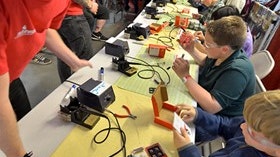Homepage
•
Learning Library
•
Blog
•
To make is to learn: A Q&A with Dale Dougherty
Expand breadcrumbs
Expand breadcrumbs
- Learning Library
- Blog
- To make is to learn: A Q&A with Dale Dougherty
- Homepage
- •
- Learning Library
- •
- Blog
- •
- To make is to learn: A Q&A with Dale Dougherty
To make is to learn: A Q&A with Dale Dougherty
By Nicole Krueger
August 19, 2014








